Jeffrey Brauer is based in Arlington, Texas, and has designed golf courses across the United States, but when he wants to escape, when he wants to play unhurried golf on courses that engage the senses with their awe-inspiring beauty and rugged charm, he heads to northern Minnesota.
There, in the Mesabi Iron Range, not far from the Boundary Waters, are three blissful courses for which the phrase “golf getaway” could have been invented: The Legend and The Quarry at Giants Ridge in Biwabik and, some 30 miles away, The Wilderness at Fortune Bay in Tower.
Brauer designed all three, and though there are plenty of other places he could play, few rejuvenate the golf soul as much as these northern stars. They’re hard to get to, easy to fall in love with and impossible to forget.
“I go up every year to play,” Brauer said. “I just love it. People say, ‘How’d those courses come out so good?’ I say, ‘Listen, living here in Texas, tumbleweed is a specimen tree.’ I could spend all summer up there, where the temperature is perfect and the trees are beautiful.”
I visited Brauer’s playground in late August and came away wondering how these courses aren’t on every golfer’s bucket list. Perhaps it’s because they’re so far off the beaten path that even native Minnesotans don’t know about them. If you don’t fish or play golf, there’s little else to do way up yonder, other than tour the U.S. Hockey Hall of Fame down the road in Eveleth.
“I’m from Minnesota and I never heard of this place, and I’m a pretty avid golfer,” said David LeGault of Rochester, who was on a buddies’ golf trip at Giants Ridge. “Every other hole, I was like, ‘Wow!’”
After an early start for the nearly seven-hour drive from Milwaukee, I pulled into the parking lot 45 minutes before my early afternoon tee time at The Legend at Giants Ridge. The Lodge, where I’d be staying for two nights, is conveniently located next to the course. From front door to golf shop, it’s a 45-second walk. You can practically roll out of bed and be on the first tee.
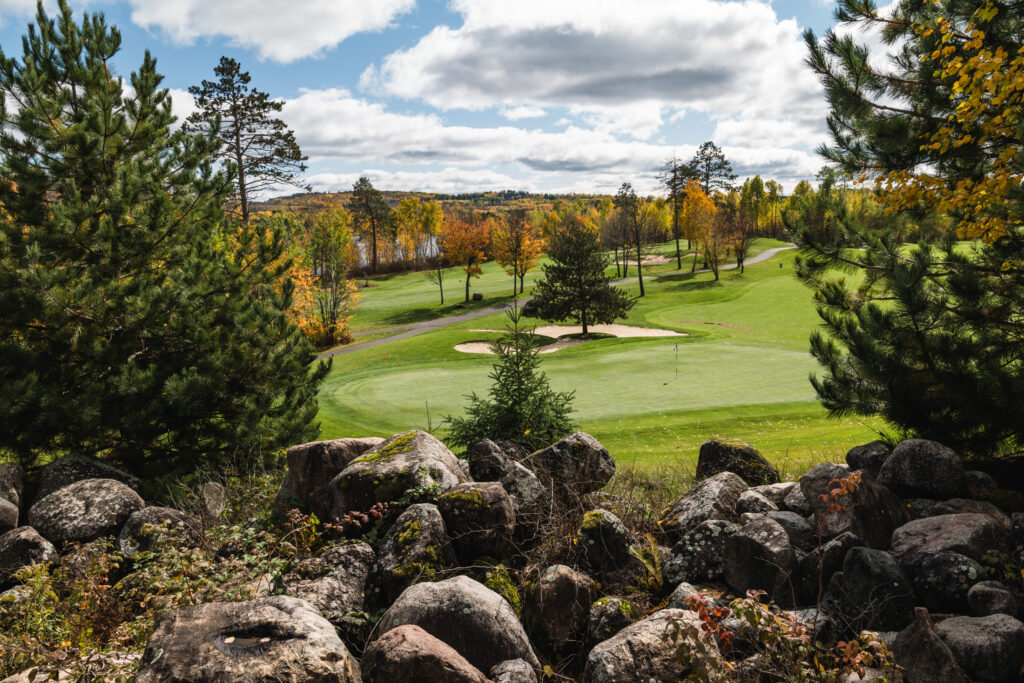
PGA legend Lanny Wadkins helped Jeffry Brauer design The Legend, which offers breathtaking scenery, including of the enormous granite craig rising out of the Superior National Forest, the resort’s namesake.
Lanny Wadkins is credited as Brauer’s design consultant on The Legend, which opened in 1997 to much fanfare and helped turn a ski resort owned by the Iron Range Resources and Rehabilitation Board (IRRRB) — and bleeding red ink — into a year-round destination.
The Legend is a big, sprawling course with wide fairways and scenery that can make anyone with an iPhone look like a professional photographer. A granite craig that gives the resort its name rises almost 2,000 feet above Superior National Forest, and the holes meander through the trees along a 71⁄2-mile cart path. Just point and shoot, in any direction.
The course was a large-scale construction project, during which thousands of trees were felled, 500,000 cubic yards of earth was moved and nearly five million pounds of white sand was imported from Ohio to fill the bunkers. Nothing about it feels contrived, though, which is a nod to Brauer’s skill. The bells and whistles are the native flora and fauna.
Speaking of which, while I relaxed in my cart on one hole on the back nine, admiring the scenery and in no hurry to push the twosome ahead of me, I was distracted by movement to my left. I turned to see a red fox staring up at me, no more than eight or 10 feet away. He circled my cart warily, but didn’t run away even when I got out. Sly is the fox who has learned to stalk golfers for bits of sandwich or a few potato chips thrown his way. Alas, I had no food and he trotted back into the woods, undoubtedly to wait on the next unsuspecting golfers.
My hunch was confirmed later at the Wacootah Grille at The Quarry, where two separate groups of golfers told me they’d encountered the fox on the same tee box.
The Legend encourages you to hit driver on every hole and punishes only shots that are embarrassingly offline. If you can keep it in the same area code, swing away. From the back tees, the course measures 6,930 yards; I played it from the whites (6,112) and found that it offered the right combination of challenging shots and ear-to-ear grins.
The third hole, a dogleg-left par 5, features a 10,000-square-foot fairway bunker in the shape of a giant bear’s paw. Carry the sandy footprint with a draw from the elevated tee and you have a realistic chance of reaching the green in two.
All four of the par 3s are striking, but No. 17 is exceptional for its drama and degree of difficulty. It’s one of the best par 3s I’ve ever seen, and I’ve seen thousands. Five tee boxes terraced with huge boulders and flower beds allow distances from 137 yards all the way up to 226. The elevated green is perched on a picturesque peninsula jutting into Sabin Lake. For fun (in a masochistic way) I hit driver from the back tee and was fortunate to barely carry the water. An ensuing up-and-down par made my day.
One of the challenges for any architect designing two courses on the same property is to make them distinctive. Brauer had no such problem when he built The Quarry, which I played on Day 2. The site is an old sand and gravel quarry a few miles south of The Legend. Where some saw unattractive, environmentally scarred land, Brauer saw opportunity.
“The IRRRB could have done a course with lake views; we were going to string it along the lake,” he said. “Then they had this quarry site. They were really nonplussed about it. It was so ugly. It needed remediation. I said, ‘Trust me, we can make something out of this. It’s going to be a better deal than another Minnesota Northwoods course.’”
It wasn’t an easy sell. Brauer had to take members of the IRRRB Board to World Woods in Florida and Tobacco Road near Pinehurst, North Carolina, before they could see what he saw.
“We showed them that with the right amount of sand, you can make a fairly playable golf course,” he said. “They wouldn’t have done it if we hadn’t gone there. Seeing is believing, I guess.”
Turned loose on the site, Brauer came up with a marvelous routing, melding sand and turf in a way that gives the course links-like characteristics. It’s a bold, inventive design and stands in stark contrast to its Northwoods-y companion.
“Probably the nicest compliment I ever got was from Brad Klein, the golf writer,” Brauer said. “He said, ‘You wouldn’t be able to tell me the same guy designed both courses.’ That’s a pretty big compliment to an architect.”
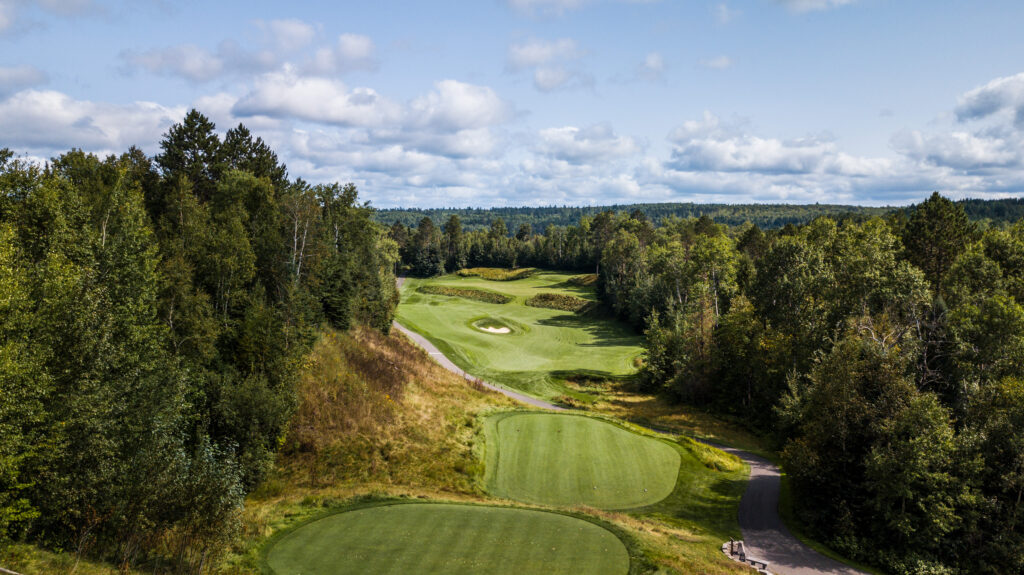
The Brauer-designed Quarry course is the top-ranked public track in all of Minnesota — for good reason.
The Quarry opened in 2004 and was named the best new public course in America that year by Golf Digest. It consistently is ranked the No. 1 public course in Minnesota and is among the state’s most formidable tests, with a course rating of 75.2 and a slope rating of 139 from the back gold tees.
It’s hard to pick a favorite hole, but if pressed I’d give the nod to No. 13, a drivable par 4 of 323 yards from the back tees. The hole is almost as wide as it is long, with a split fairway offering numerous options and angles for the golfer who wisely chooses to lay up. The diagonal, elevated green is fronted by a sheer eight-foot wall of matted grass that swallows mishit approaches.
“We never even planned that,” Brauer said. “That topography was left over from some sand mining operations. It’s funny, because it didn’t show up on the topo (topographical map). We had a design for the hole but changed it to work around those features. It was a site that just kept on giving.”
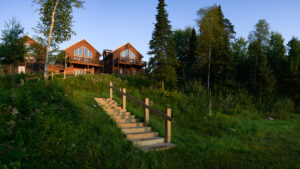
The Lodges at Giants Ridge are regally rustic.
Another hole I loved was No. 9, another short par 4 with a rumpled fairway that narrows dramatically as it approaches the three-lobed green. It’s tempting to blast away with driver from the elevated tee, but you’d better hit it on a string.
The 11th hole is a neat par 3, all carry over a sandy waste area to a green set on a diagonal and seemingly as wide as an aircraft carrier. The flagstick was in the right corner, closest to the tee, and I hit 8-iron. Had the flag been in the back left, the hole would have played nearly 40 yards longer and I would have had to hit 5-iron.
The 18th is a difficult dogleg-left par 4 that plays out toward and then along a lake that was once a 550-foot-deep mine pit. The Wacootah Grille in the clubhouse has outdoor seating overlooking the water, which makes it the perfect spot for a post-round sandwich or beer.
On Day 3, I drove some 30 miles north to The Wilderness at Fortune Bay, a resort owned by the Bois Forte Band of Chippewa that includes a casino, lodging and a marina on Lake Vermilion. The Wilderness is located just outside of the tiny town of Tower, which owes its establishment to the nearby Soudan Mine. Tower claims the record for the lowest temperature ever recorded in the U.S. east of the Great Plains: minus-60 degrees Fahrenheit. Safe to say nobody teed it up that day. Fortunately, I encountered Chamber of Commerce weather and played The Wilderness with general manager Ryan Peterson, who once worked as an assistant golf professional at Pine Hills in Sheboygan, Wisconsin. Peterson was a gracious host, pointing out features on the golf course I might have missed.
The course was Brauer’s third design in the region and opened in 2005. Like The Quarry, which opened one year earlier, it was named best new public upscale course by Golf Digest, giving the architect a rare back-to-back double. The Wilderness consistently earns high rankings on the magazine “best” lists, including the No. 7 casino course in the U.S. by Golfweek in 2020.
“They interviewed several architects,” Brauer said. “Of course, they had been down to see The Legend and we took them over to see The Quarry, which was under construction. They didn’t want it as hard as The Quarry was going to be and they wanted it harder than The Legend was. It was one of the clearest design briefs I ever had: Split the difference, and you’ll be fine.”
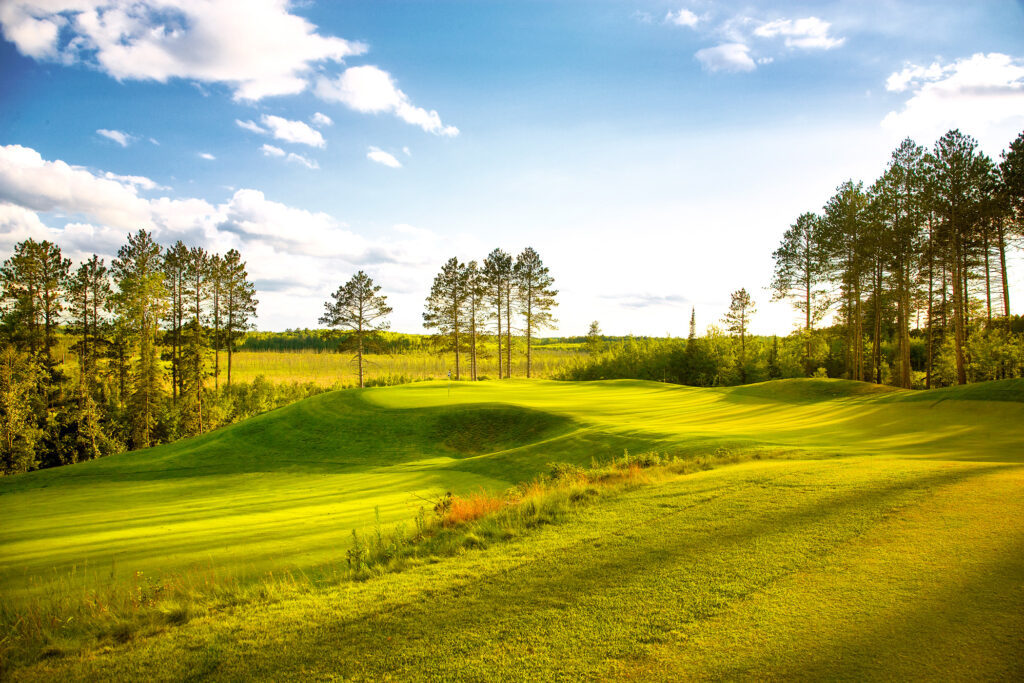
The 16th hole at the Brauer-designed Wilderness at Fortune Bay is a beastly, 540-yard par 5.
The Wilderness is characterized by elevated tees, white ledgerock outcroppings, wetlands and an abundance of cedars and spruce. The fifth hole, a medium-length par 4, features a Biarritz green with a four-foot-deep swale in the middle. The tee box on the par-3 seventh is some 50 feet above the green and offers views over a large wetland to Lake Vermilion in the distance. It’s not unusual to see osprey hunting over the wetland.
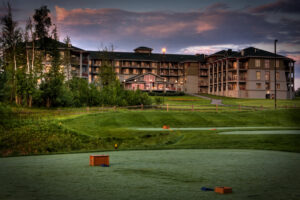
The Fortune Bay Casino is home to 173 guest rooms and suites, five restaurants and more than 800 slots to choose from.
There’s a tremendous stretch of holes on the back nine, starting with No. 12, a pretty little par 3 with a peninsula green. The 13th is a short par 4 along the shore of Lake Vermilion, where sightings of ducks, loons, osprey and eagles are common. Nos. 15 and 16 and back-to-back par 5s; both are reachable in two for the big hitter, though the latter features a postage stamp green. My favorite hole was the ninth, a medium-length par 4 that opens with a tee shot down into a beautiful valley and then calls for an approach over a pond fed by cascading rapids.
My accommodations were in the comfortable casino hotel, which includes an excellent restaurant, the Sunset Steakhouse. It’s a good thing you never have to leave the property, because there’s not much in the way of fine dining in nearby Tower. In fact, because of the coronavirus pandemic, I had a hard time finding much of anything open off resort, and the casino was mostly empty.
After four days of pleasurable golf on three exceptional courses, I packed up the car and headed home in the early morning dark. The sun was rising when I entered Duluth on Hwy. 53, which twisted steeply downhill toward Lake Superior shimmering in the distance – a poor man’s San Francisco if ever there was one.
Rarely have I felt more alive.
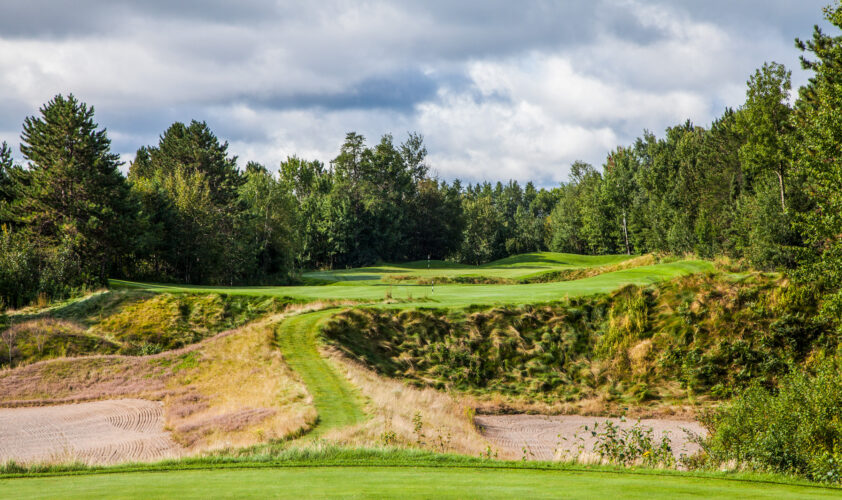
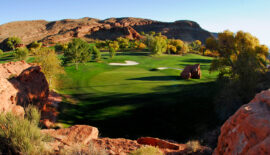 ';
';
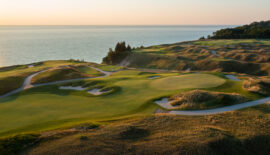 ';
';
 ';
';
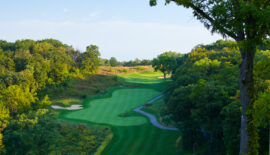 ';
';